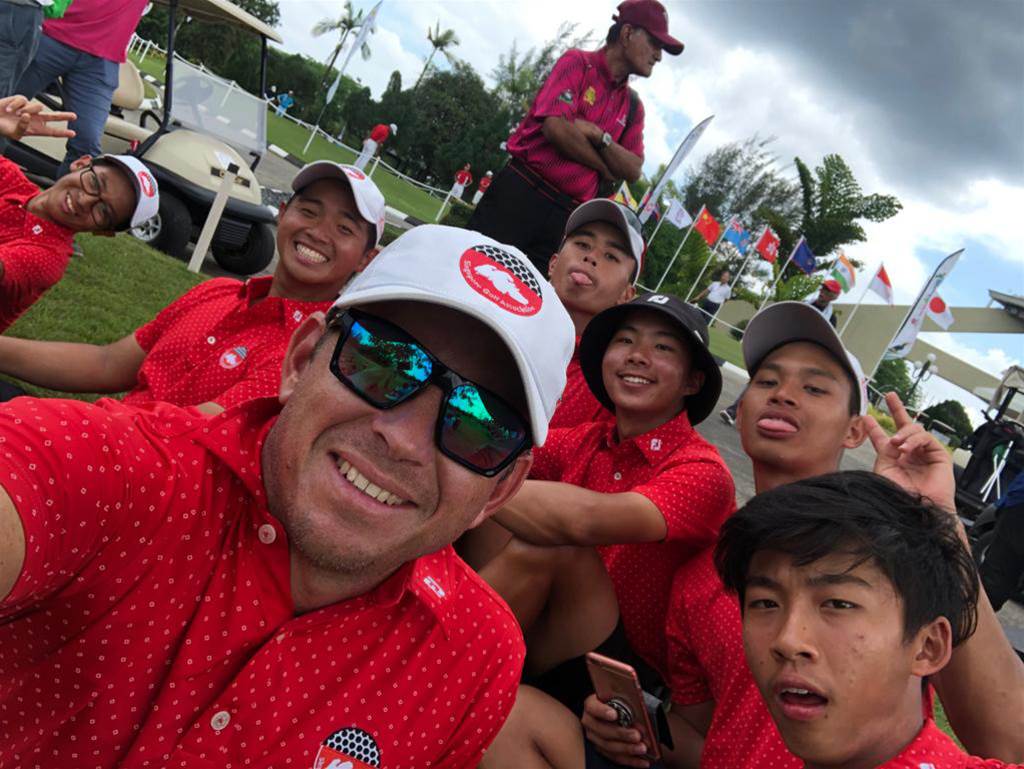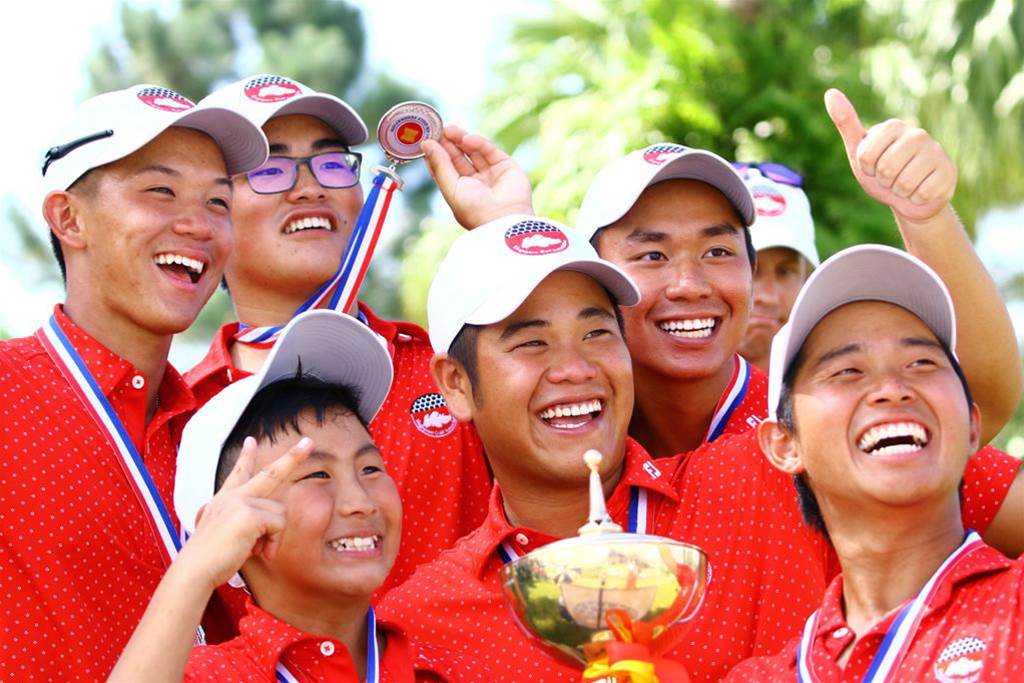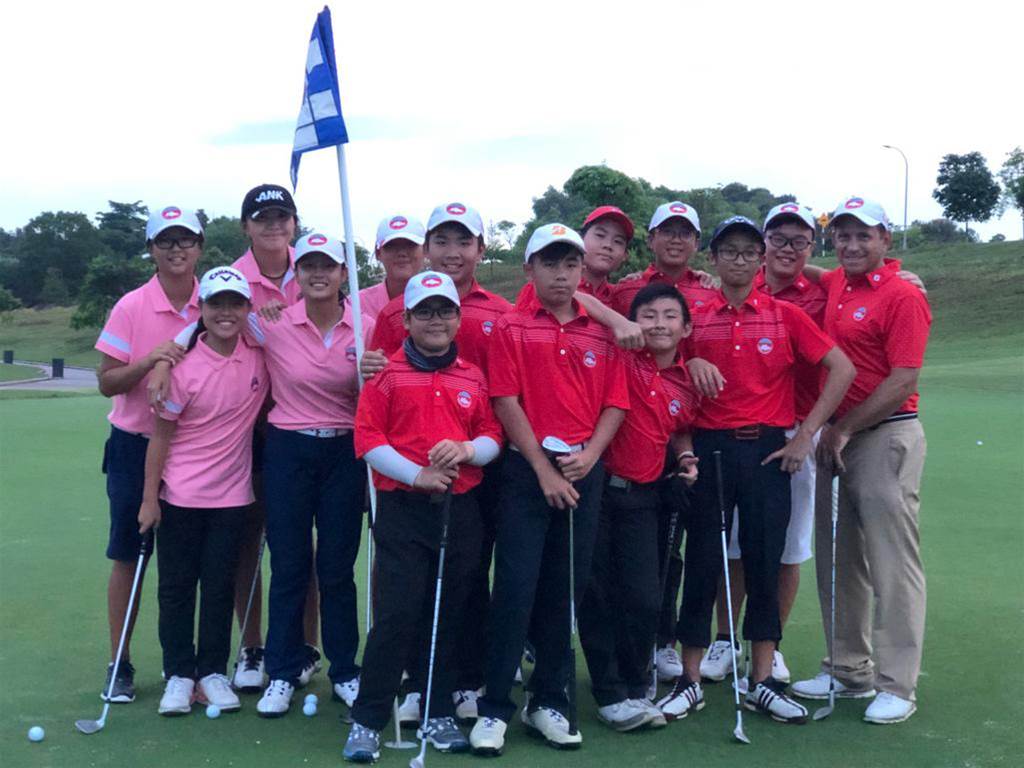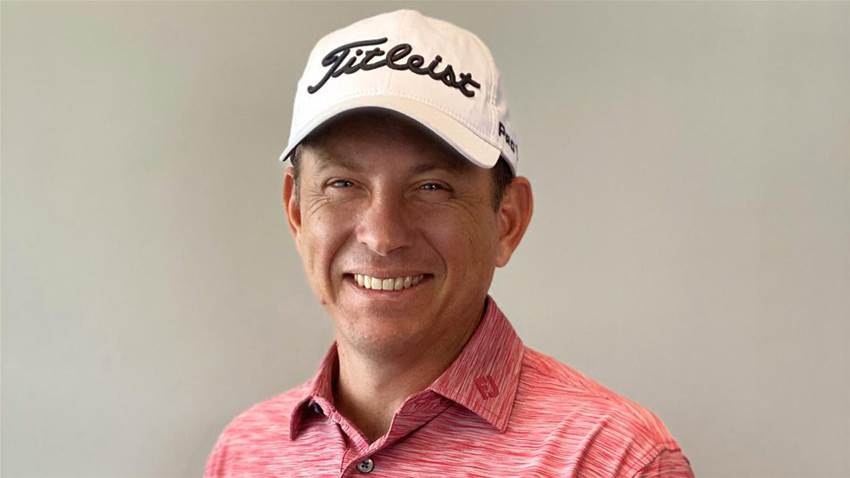Matt Ballard grew up on the Gold Coast, played professionally on numerous Tours for 14 years and coached former World No.1 Adam Scott. In January last year, Ballard moved his family to Singapore to take over the reins as National Coach for the Singapore Golf Association. We caught up with the proud Aussie to learn more about his profession and life in the city-state.
How long have you lived in Singapore and what are some of the perks?
I've been in Singapore for just over one year. Clean and safe is the first thing that comes to mind. You never have to look over your shoulder – and with a young family this is a great place to bring up our family with a diverse culture of global expats residing here. Having been fortunate enough to travel the globe, I have never experienced a city that is as safe as this. It’s common to see wallets and phones left on tables in coffee shops while people chat and nobody locks their bicycles up in public places. Those are just two examples I see often.
Also, being very close to the equator, we don’t really experience four seasons. When I arrived here, I asked someone, ‘what’s the best weather application to use?’ To which they replied, ‘why do you need that? It’s always 33 degrees with a chance of a storm every day of the year’.
For the most part, though, it makes for good golfing weather because it’s always warm, with some outstanding, world-class courses to play.
You succeeded Andrew Welsford as the Singapore national coach and Gareth Jones is obviously working with Japan’s national program. Why do you think Aussie coaches are so popular overseas?
I’m not sure entirely, maybe have to ask our respective employers, however I will say that we are all passionate coaches and our learning via the extensive Australian PGA training program and subsequent qualifications you attain from completing this course is one of the most respected and well-travelled PGA credentials in the world of golf. The evidence is that there are many – and I don’t know the number – Australian PGA members working around the globe in various roles, such as national coaches, general managers of golf clubs, directors of instruction, directors of golf and teaching professionals.
Where did you grow up?
I grew up on the Gold Coast. Burleigh Heads Beach, while playing professionally on Tour for 14 years before transitioning into high performance coaching. I coached at Southport Golf Club and Sanctuary Cove and was a Queensland Academy of Sport high performance coach before moving to Singapore.
Can you tell me about your family?
My wife Alison works for Titleist South East Asia and my two daughters are in international schools here in Singapore.
What is the COVID-19 situation like in Singapore now?
Singapore was the pin-up country in the early stages of managing the virus – but now we have had a huge outbreak of cases, mostly foreign workers living in dorms, and the government has been strict and very conservative to contain the outbreak further. We will be without golf or sports or shops or anything except grocery stores and hospitals until the middle or end of June. Which will make it three months locked down kept inside.

How has the pandemic affected you personally and professionally?
Personally, my family and I have been indoors for almost two months. Home-schooling our kids has its challenges. I’m not a school teacher and it’s been a while since I did grade five maths (laughs). My wife and I have also been working from home. Having said that we manage our time the best we can with what we have. We know many others who have suffered during this time.
Professionally, before the outbreak, I was proactive and began moving to virtual lessons for our squad members ahead of time. I’ve now been busier than ever during his time from home. Coaching virtually during the whole process; educating them on course strategy; managing fear anxiety expectations; statistics and data collection; mental toughness; equipment; goal setting; scheduling; fitness strength and conditioning; and doing live lessons for players who have hitting nets and putting greens or mats at home.
You were Adam Scott’s short-game coach. What was that like, what were some of the challenges and what did you learn from that experience?
Some of my best coaching moments for sure coaching a former No.1 in the world. An extremely gifted and humble, hardworking human and friend. It was high performance coaching at its best working with Adam Scott and everything that goes along with having him as your boss. Just being inside ropes on PGA Tour at events and majors was an experience. Rubbing shoulders with other world-class players and coaches during practice rounds, dinner tables and driving ranges was fantastic for my overall development as a golf coach.
The biggest challenge was finding one percent gains in an already fine-tuned successful athlete. I did however find some areas to improve in his wedge proximity from certain distances, which we changed his set composition to run four wedges to tidy up the vacant hole at certain distance. Another was the five-foot range percent make on the greens. Which during my time I’m pleased to say we made huge statistical improvements in these areas of his game.
Adam has copped plenty of flack over the years for his putting. What are your thoughts on his putting?
Yes, he has, and in my opinion it’s unwarranted. You don’t win two times a year globally almost for an entire career and stay entrenched in the world’s top 10 for around a decade if you can’t putt, quite simply you don’t win at Augusta or Riviera if you can’t putt.
"You don’t win two times a year globally almost for an entire career and stay entrenched in the world’s top 10 for around a decade if you can’t putt."
There are some statistics and data on his putting from certain ranges that he is often ranked amongst the world’s best. Adam will beat most people on the putting green on any given day. I guess it’s a sensitive topic because his ball striking is world class and as a result the focus tends to be on his putting.
You played successfully on multiple Tours – Australasian, Asian and Japanese circuits – what was it like making the transition into coaching?
The first year was hardest for me. I still clutched onto my playing and was trying to coach and play part time. I found it hard to let go of competing. My wife noticed this before I did and said to me, ‘what are you trying to do? Are you a coach or a player? Because if you want to be great at one, which I know you do, you can’t do both equally as well. Make a choice’. So from that day forward I devoted myself to becoming a high-performance coach and found fulfilment and a sense of achievement in helping others succeed.
I started coaching Tour professionals before beginners and club golfers. Which is opposite of many coaches these days and I feel this is what separates me in my field. When you are coaching someone whose livelihood depends on your information, you have to be sure of what you are saying to that person. This comes with a high degree of pressure to learn and know what and when to say. It is a daunting place as a coach, but it’s the coaching space I love most. Which I also understand is not everyone’s favourite type of coaching.
How would you describe your coaching style?
A problem solver first, a mentor and educator. I started as a short game specialist but now I would consider myself an all-inclusive, high-performance coach that covers all range of disciplines that high performance athletes require. Anything that will directly influence an athlete to play better I will explore. I love scratching the surface for non-visible concerns players may have. This is why coaching is fun to me. Finding something nonvisible to a player and shining a light on that for the player and guiding them to solve the problem on the path to better golf.

You've organised Zoom chats with the Singapore squad, Steve Williams, Michael Campbell, and C.T. Pan. How did that come about and what have your players taken from the conversations?
It’s been exciting for our squad to learn from these people. It came about by simply asking them, nothing ventured nothing gained. I had a relationship with Steve Williams while working with Adam Scott, he was very giving of his time and shared so many knowledge bombs for our athletes from his days caddying for Greg Norman and Tiger woods for 150 Tour wins. The main reason was to keep our student athletes engaged during this time at home in lockdown. We have a few more up our sleeve who we will be interviewing in coming weeks, which I’m excited about hosting. The take away golf nuggets our squad have been able to consume and digest from these conversations have been so valuable. The next step is taking action on them when we are allowed back on course.
Are there any language or cultural barriers teaching in Singapore?
English and Chinese are the main languages here. They have a hybrid slang they call “Singlish” which has been fun to learn the nuances of. It is supposed to be hybrid of Singaporean and English. That has been fun swapping Aussie slang with Singlish slang with our squad members. They try to say ‘g’day mate, how ya goin’?’ to me while I try to talk back to them in Singlish. Always gets a few laughs both ways.
What do you miss most about living in Australia?
Family and the beaches and Aussie sport – NRL and AFL – and public access courses. Not to mention a good pub chicken parmigiana or meat pie.
Where do you see yourself living in 10 years?
I asked this exact question to my squad yesterday in a goal-setting Zoom chat. It’s not easy for many to answer this, but for me, I will be 53 then. I’d love to have taken some Singaporeans to universities in the States, Tours in Europe, America or Asia, or represent Singapore in the Olympics during my time here – and if my body is able, I would not mind diving back into playing golf in seniors. As for where I see myself living, we are happy here for the moment. No immediate plans to live elsewhere. I am very content coaching elite players right now for the foreseeable future. Lots will depend on our kids and schooling. But it could be Australia, USA or Singapore. Those would be my three likely destinations. I'm sitting on the fence (laughs).

Laguna National and Sentosa are the standouts for me. Laguna is where my high performance training facility is located and my office is based – drop in and say hello if anyone from Australia is visiting (laughs) – and is first class. There are 36 holes with two contrasting courses. The Masters and Classic courses are rated in the top courses in Asia.
Sentosa has 36 holes which are both ranked in the top 50 in world. The playing conditions are ridiculously good on both and they are also accessible to play for visitors, although the green fee ranges between $200 and $400.
Who are some young Singaporean players to look out for in the future?
We have plenty of talented student/athletes – and I use this term often because that’s what they are: students first always here in Singapore then athletes second.
Brayden Lee is 13 years of age and recently won an overseas junior event at the end of 2019 in Jakarta, shooting bogey-free 67 on the final round on an Asian Tour course called Pondok Indah. Which is super impressive at 13 years of age. Not sure I could break 90 when I was 13 let alone bogey-free five under.
We have our highest ranked World Amateur Golf Ranking player James Leow who is at ASU in Arizona. He almost won the Asia-Pacific Amateur in China last year and finished tied fifth, two shots out of the playoff. He also won the gold medal at the Southeast Asian Games, winning the individual title in the Philippines. Our best female golfer is Jen Goh who is a supreme athlete and can strike the ball as well as our best males with the same club head speed.
Those last two players are our best ‘professional amateurs’ because they are already doing what it takes to take their game to next level. The future is bright for them and we have many others who are looking to follow in their footsteps. Hopefully I can play a small part in their development and guide them to more success globally.
Related Articles

Landmark professional golf tournament coming to Auckland

Under the radar into contention: Si Woo’s scintillating Australian Open Saturday












